Do you know these facts about moose? The king of the forest, as the moose is sometimes called, is truly powerful when encountered in the wild. But do you know how big they can get, why there are white moose and how hunters judge their moose trophies?
Innehållsförteckning
Moose encounters and memories
Moose are found all over Sweden, except on Gotland, and as a Swede there is a good chance that you have seen moose at some point. The last time we saw moose was when we walked a Cultural trail on Värmdö this spring. Last year, Peter also encountered a moose on the island of Ringsö in Lake Mälaren. The moose was resting by the roadside and when he passed it, it stood up and stared. Then you look over your shoulder more than once ...
I (Helena) particularly remember a moose from my childhood midsummer celebrations in Tylösand. The moose came up to the edge of the forest and looked long and wide-eyed at those strange people dancing round a pole ... And yes, I remember one coming into our garden too, and one I met on a forest path. They are large!
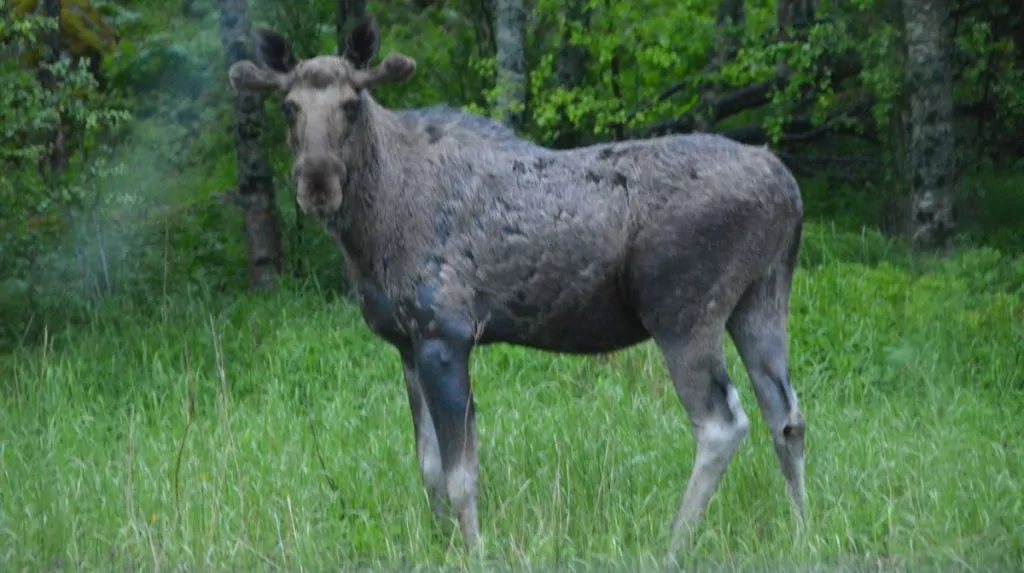
Facts about moose
Here we have collected a number of interesting facts about moose. We are not moose experts, but we have spent a lot of time searching for information. Sometimes there are slightly different facts about moose in different sources, and we've done our best to find information that seems consistent and reliable. So enjoy!
1. There are two species of moose
Elk, called Alces in Latin, can be divided into two subspecies: European elk (Alces alces) and American elk (Alces americanus). The two species are relatively similar, but differences exist in the construction of the bones in the upper jaw, the size and shape of the bull's horns, the colour of the fur and the general body proportions.
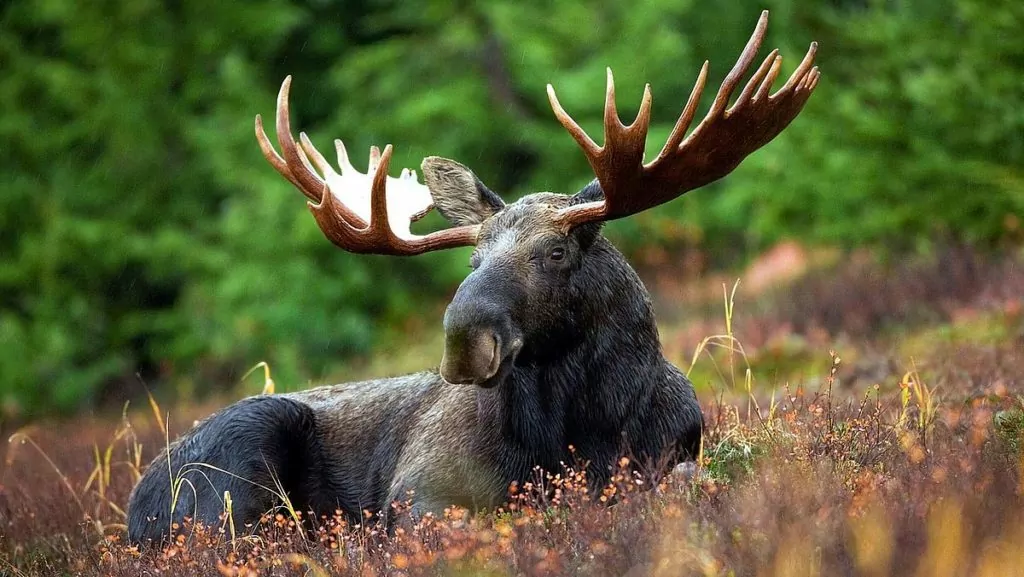
2. The moose is a 'young' species
From an evolutionary perspective, it can be said that the elk is a 'young' species. The oldest fossils found of the genus 'Alces' are 'only' 2 million years old and the oldest fossils of 'Alces alces' are no more than 100,000 years old. Studies show that the ancestor of today's moose lived in Central Asia 60 000 years ago.
3. Moose have different names in English
In North America, moose are called 'moose' and in the UK they are called 'elk'. However, if you use the word 'elk' in North America, you may think you are talking about a white-tailed deer.
4. The moose's range has shrunk
Moose today live in northern Europe, northern Asia and North America. They used to have a much larger global range, but due to hunting and other human activities, their population and range has been decimated.
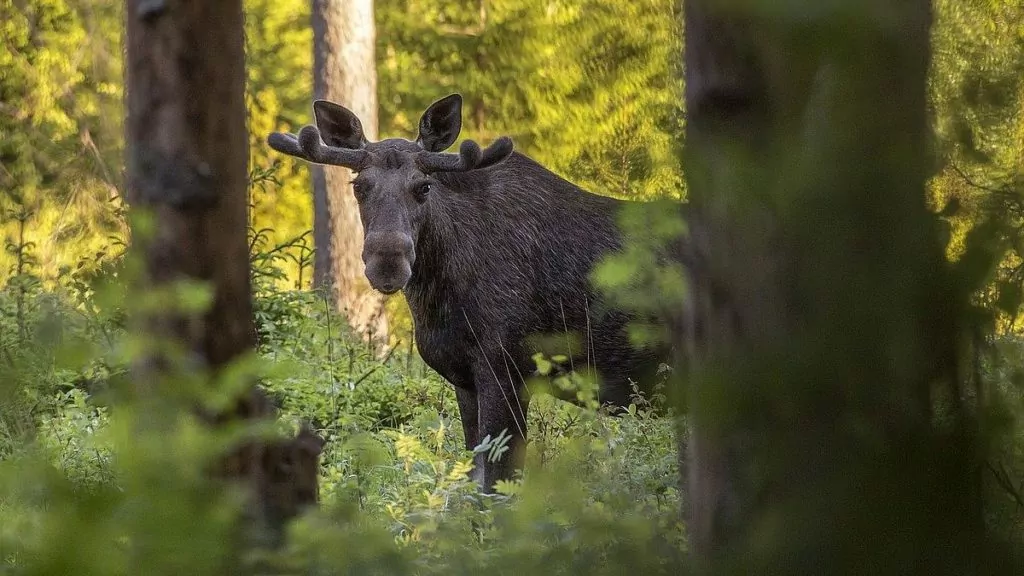
5. Moose live alone
A perhaps surprising fact about moose is that they seem to like the single life. For most of their lives they live alone. In the winter, they sometimes gather in small groups, but during the mating season in the autumn, no pair will allow others nearby. There are sometimes fierce battles between two bulls competing for a specific cow, but often the larger moose's threatening behaviour is enough to make the smaller one leave.
6. moose cows are pregnant for 8 months
Moose cows go into heat at the end of September, and later the further north you go. The animals mate in the autumn and the cow is then pregnant for 8 months (230-240 days). Calves are usually born in May or June. Usually there is one calf, but there can also be twins. The calves stay with mum for a year before she decides it is time for them to be on their own.
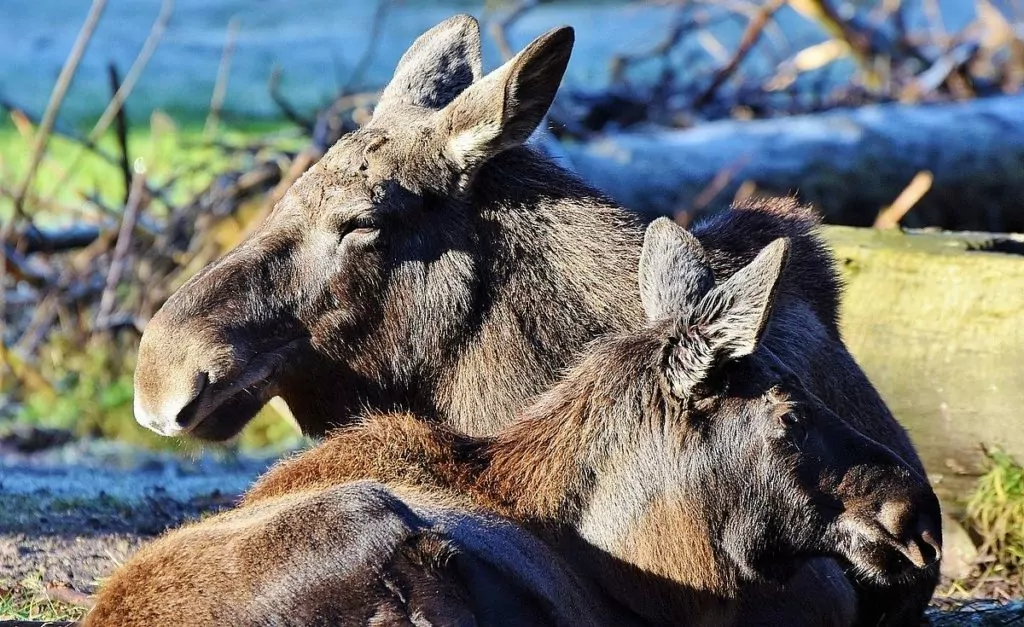
7. Moose grow fast
A moose calf weighs between 8-15 kg when it is born and then increases in weight by about 1.5 kg per day for the first few months.
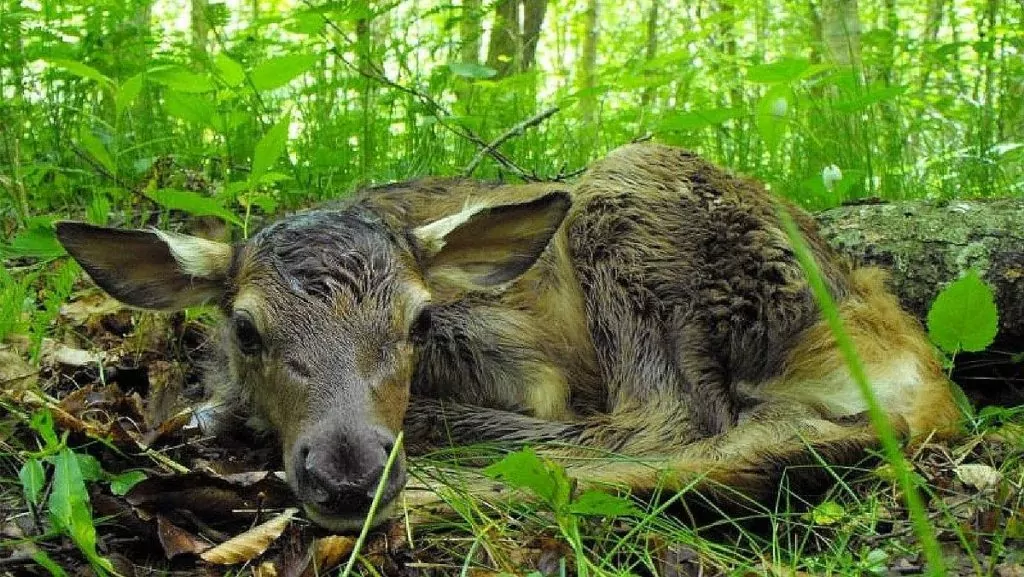
8. Moose are big eaters
Moose are large animals, so they need a lot of food. During the summer months, they can eat up to 35kg per day, according to some sources. In winter, they eat a little less, perhaps 'only' 15 kilos per day.
9. Green is good
In summer, moose feed mainly on leaves, shoots and small twigs of aspen, willow, rowan, oak and birch, as well as water lily roots. In autumn they vary their diet with blueberry rice, oats and other crops from cultivated fields. In winter, they eat pine needles, juniper, twigs and perhaps berries, heather and pine bark.
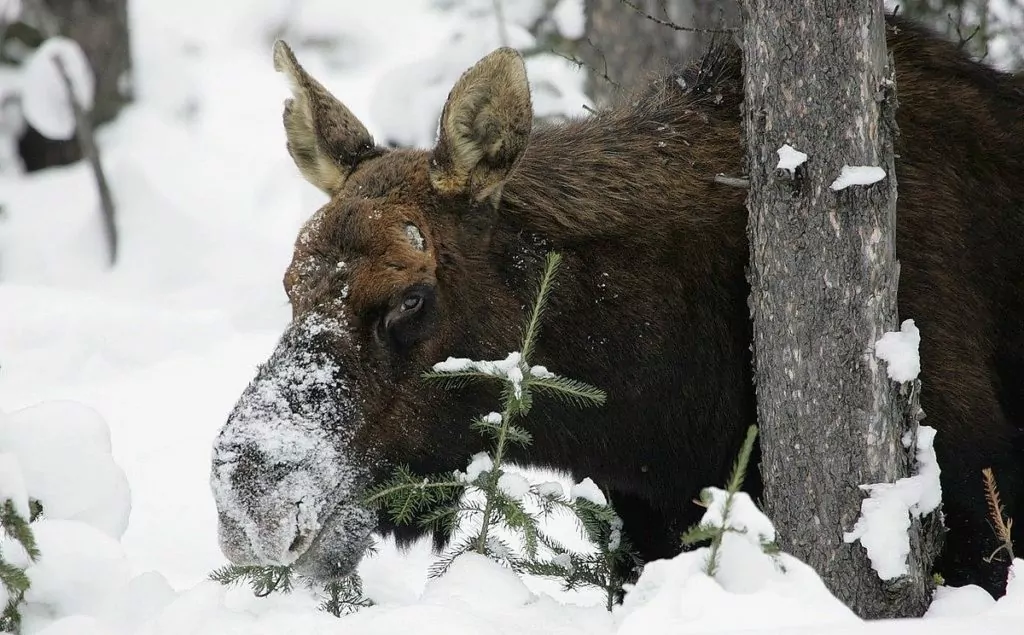
10. The heaviest bull moose can weigh up to 800 kg.
The size of a moose depends on its sex, species and the environment in which it lives. In Sweden, moose cows usually have a height at the withers of 150 to 170 cm, and bulls have a height at the withers of 180 and 210 cm. Moose cows weigh about 270-360 kg, while bulls weigh 380-540 kg. The heaviest known bull moose have weighed close to 800 kg.
11. There is a big difference between bull moose and cow moose.
Bull moose and cow moose differ in several ways. Firstly, the bulls have horns. Second, after 5-6 years of age, bulls become significantly (around 20 per cent) larger than cows. Thirdly, the cow has a white stripe at the genital area.
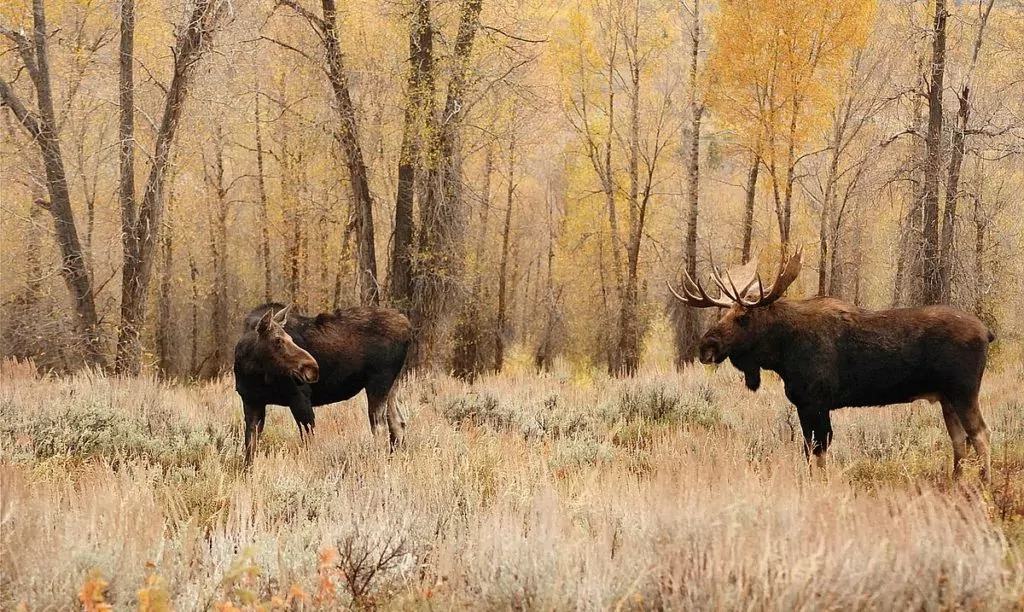
12. The horns can weigh over 18 kg
As with many other deer, only the males carry horns. The horns emerge slowly during the first year of life and can be seen as small bumps behind the eyes. At two years of age, smaller tips appear, and between 6 and 12 years of age the horns are at their largest. They can weigh more than 18kg. Alaskan moose can have even heavier antlers, weighing up to 40kg.
13. Moose lose their horns
Moose lose their horns every year, in winter. In spring they grow back, and can grow 2 cm per day.
14. There are two types of elk horns.
Moose horns come in two types, 'bar or branch horns' (cervine horns) and 'shovel horns' (palmate horns). Bull moose with cervine horns are most common in southern Sweden, while palmate horns are more common in northern Sweden. Shovel horns can be so large that they span around 1.5 metres.
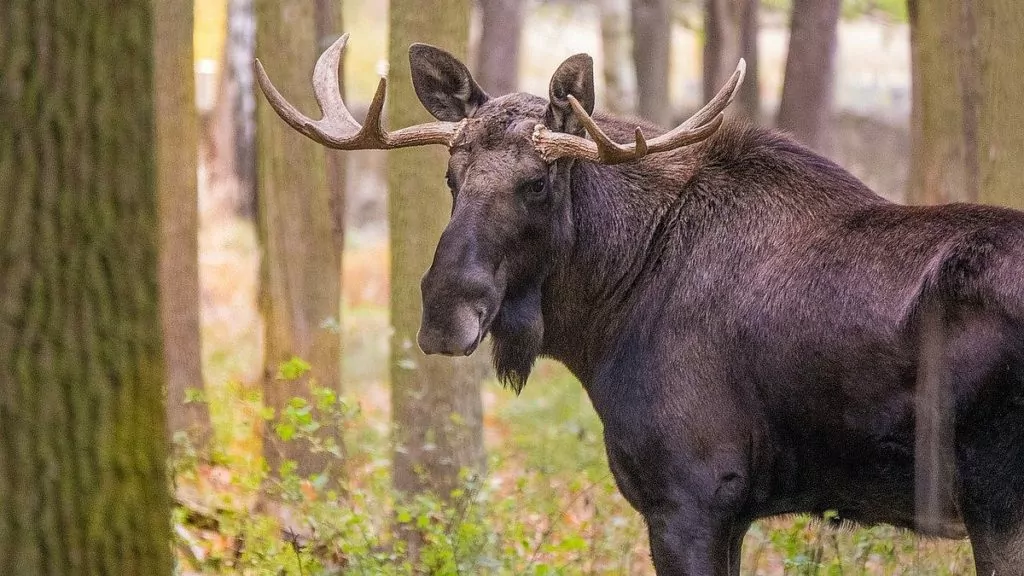
15. The moose trophy is assessed with points
To assess whether you have shot a medal bull, you need a pen, paper and a steel measuring tape. You add up your points by measuring the circumference of the horn bar, the projection (where the trophy is widest), the vertical length of the horn, the width of the paddle, the length of the spines and the number of spines.
16. Many tags = high status
The more thorns the horn crown has, the higher the status of the trophy. The thorns on both horns are counted and the total number determines whether it is, for example, a "twelve-tagger". On Expressen, we have been able to read about a hunter who killed a 32-tagger..
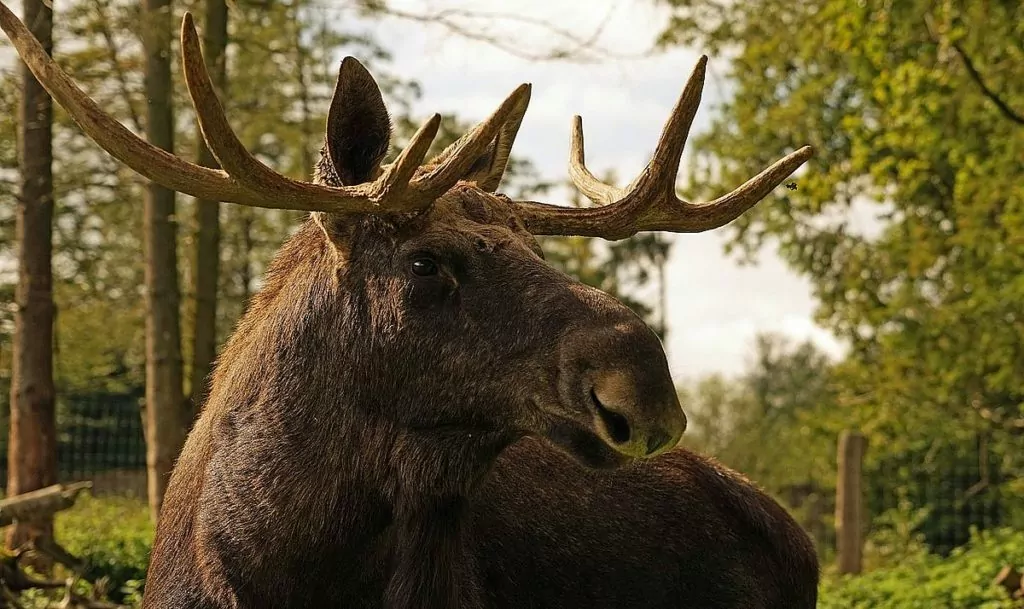
17. White moose exist - but are rare
White moose are rare and are estimated to number around 20-100 in Sweden. Their whiteness is usually due to 'leucism', which means that they have a complete or partial deficiency of eumelanin or pheomelanin. For a calf to be white, the gene must be present in both the bull and the cow.
18. Moose are fast
Another fact about moose is that they are fast. For long distances, they can travel at 30 km/h. For a shorter distance, it can run at 60 km/h.
19. Moose are good swimmers
It is not uncommon to see moose swimming. They are good swimmers and sometimes choose to swim across lakes instead of walking around. Some moose have even swum from Sweden to Denmark.
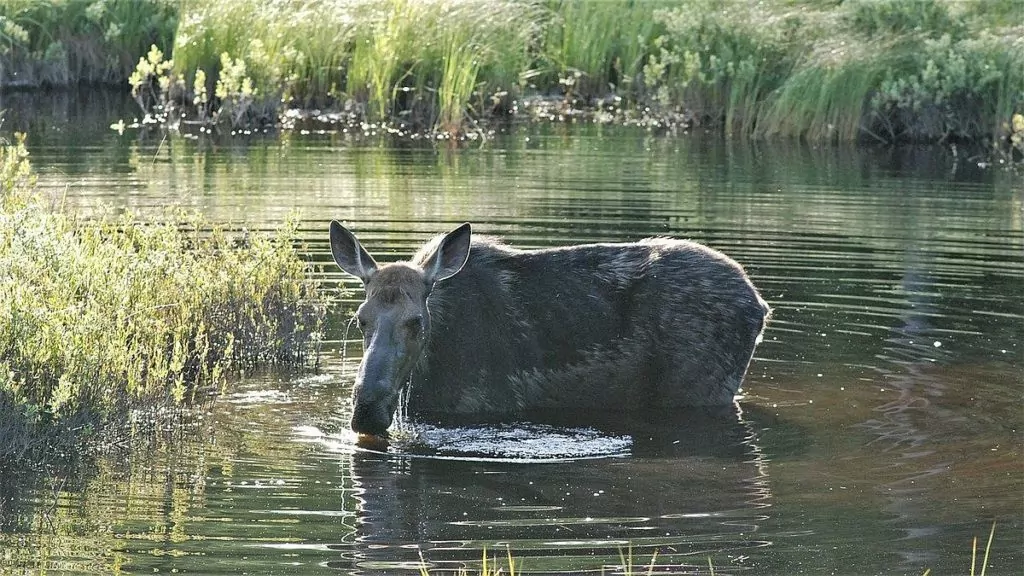
20. Moose can become aggressive
Moose often move slowly and tend to behave calmly. However, if they become frightened, they can show aggression. This is especially true if a female moose is afraid that her calf is in danger.
21. Moose have enemies in the animal world
Despite their size, moose have enemies. It is mainly young, sick and old moose that need to worry. These are less able to defend themselves and may fall prey to a wolf pack or possibly a bear. In other countries, cougars, black bears and Siberian tigers can pose threats, and there are even reports of moose being killed by killer whales.
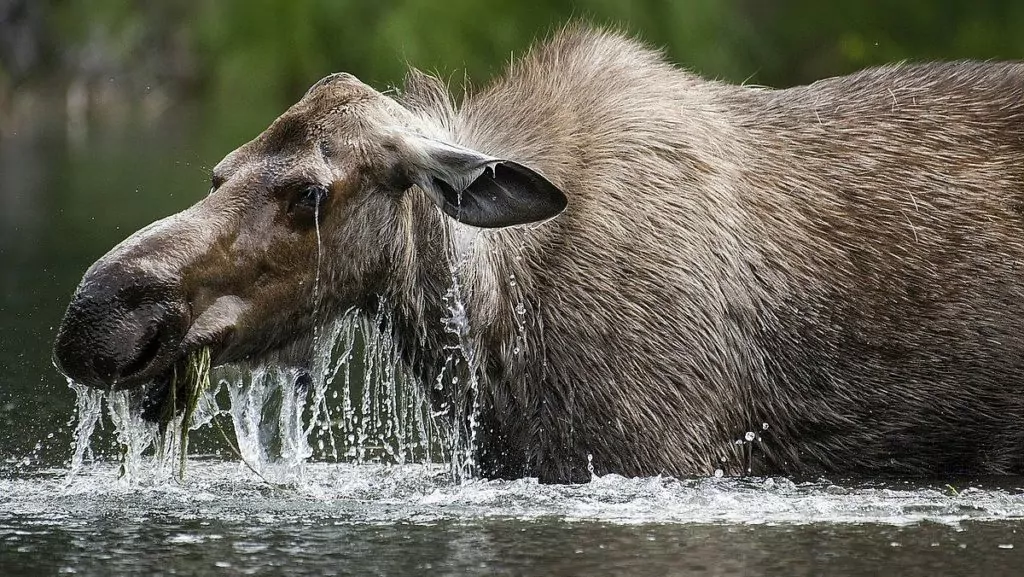
22. Man is the moose's greatest enemy
Humans are moose's biggest enemy, mainly because of moose hunting. Moose can also be killed in road accidents, and pushed back into more restricted areas due to human activity.
23. Moose can live for 25 years
Moose can live to be 25 years old. However, they may fall victim to moose hunting or car accidents at a younger age, and many may not live beyond 10 years.
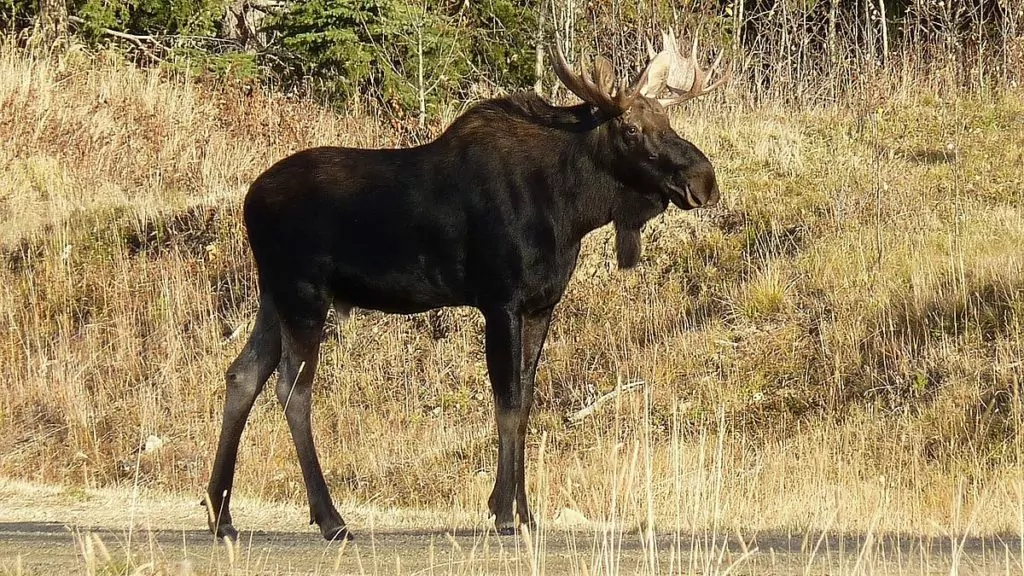
24. Sweden is the most elk-dense country
There are approximately 300,000 to 350,000 moose in Sweden (different sources give slightly different figures for moose facts). Just under 100,000 moose are shot each year, but around 100,000 new calves are born each year. Sweden has the densest 'population' of moose in the world.
25. You can learn more facts about moose in moose parks.
Although there are plenty of moose in Sweden, it is not always easy to spot them. If you want to be absolutely sure of seeing a moose, you can go to a moose park where you can meet moose up close and learn more about them.
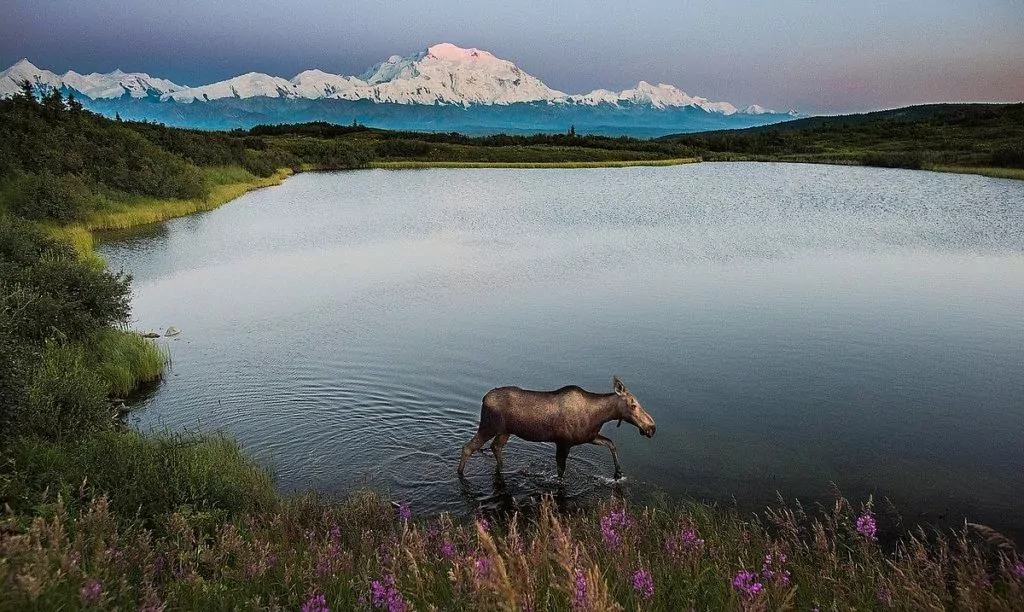
More fun facts about moose
- Serialised figures neck, created by Lars Mortimer, is perhaps Sweden's most famous moose. The melancholic moose Hälge lives in the large forest around the village of Avliden.
- Astronomer Tycho Brahe had a tame elk with him on the island of Ven. One day in 1591 he was invited to a party at the citadel in Landskrona. The moose got thirsty and the guests offered it mead. Unfortunately, it became overly refreshed and tripped on a staircase, resulting in a broken leg. Sadly, despite care, the moose had to be put down.
- Danish moose are unusual, as there have been no wild moose in Denmark since the Stone Age. However, at least two moose have swum over from Sweden, one of which died in a railway accident. A few moose have also been released into an enclosure.
- Moose recipes are not entirely uncommon. How about moose stew, moose dumplings, moose meatballs, moose steaks or perhaps moose fillet?
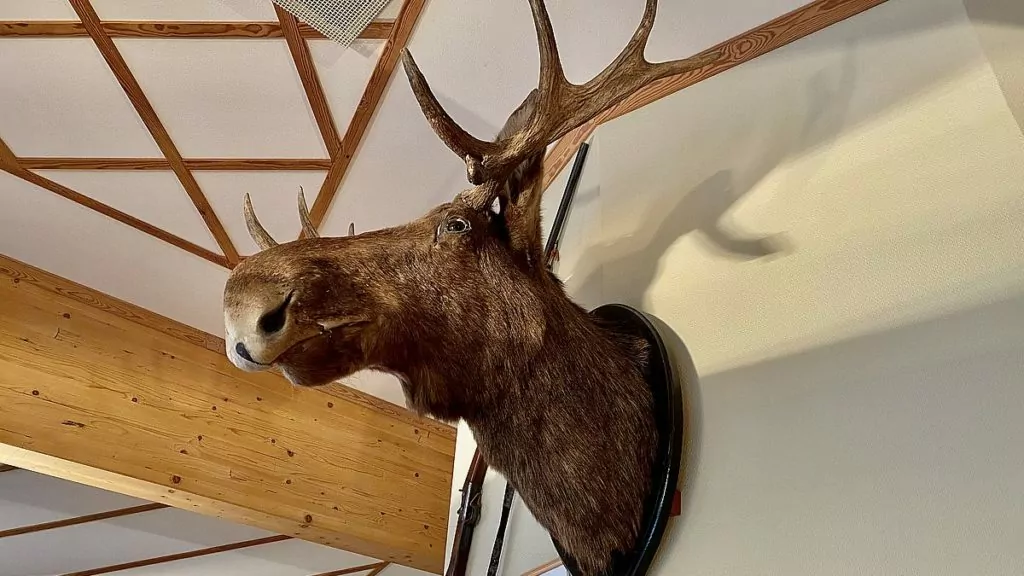
More facts about moose?
Do you know any more interesting facts about moose? Or perhaps you can share some exciting moose stories?
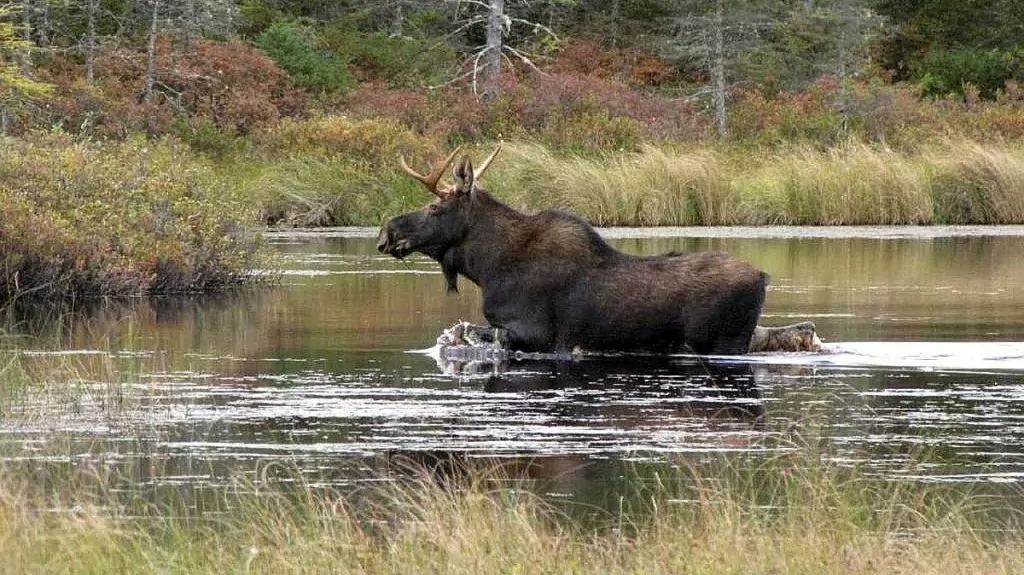
All images in the post on moose facts are borrowed from Pixabay, except for the moose taken in Norway and the moose head, which are our own images.

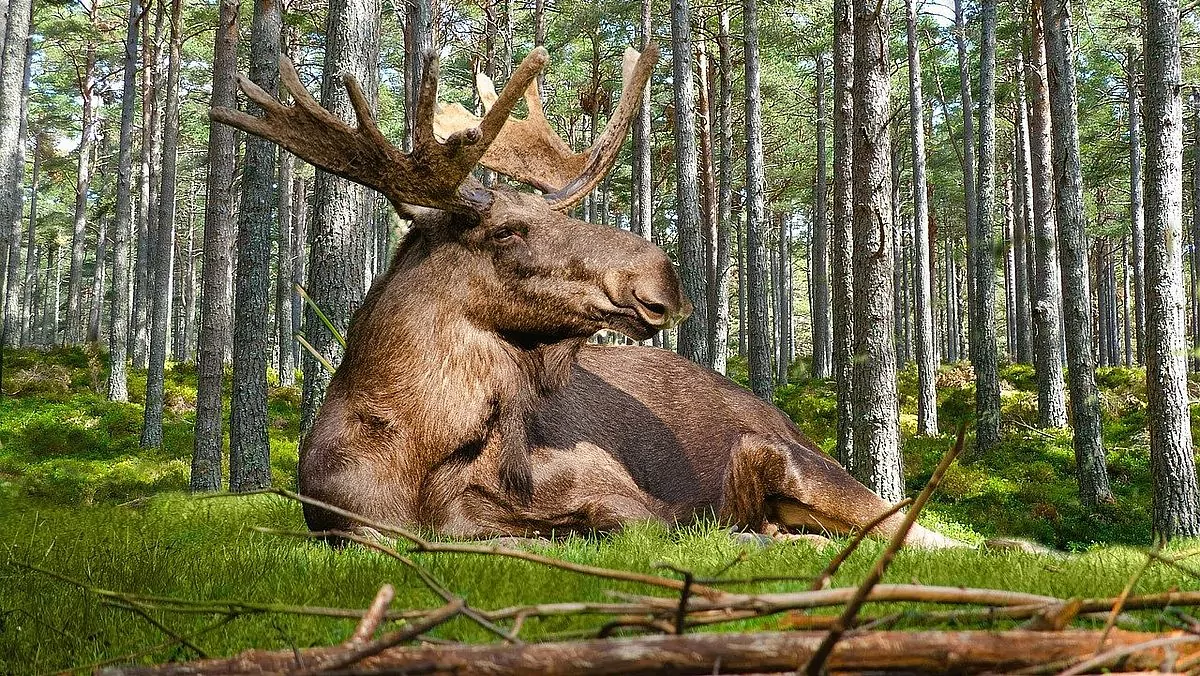









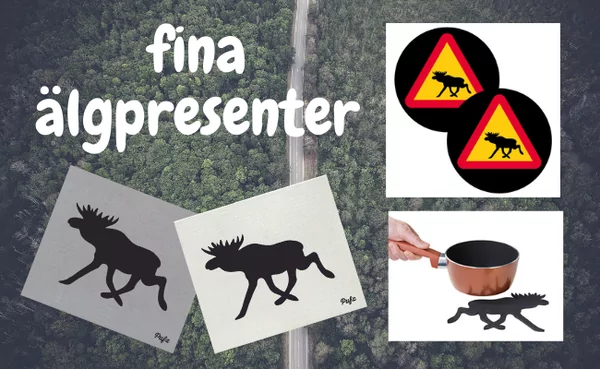
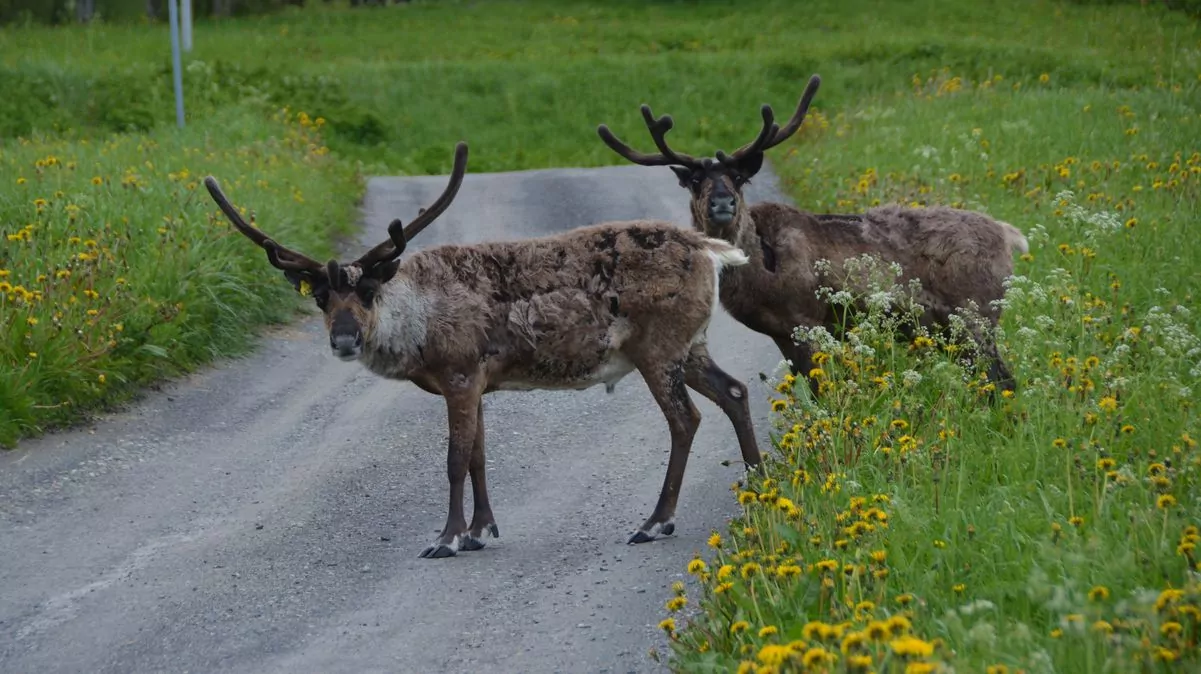
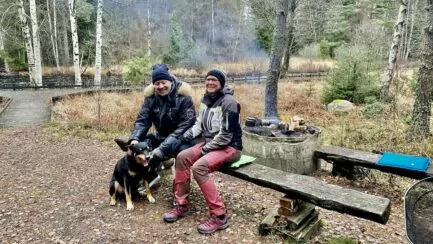



Matts Torebring says:
Wow, what an interesting and mega moose story. I myself have memories of moose since I learnt to walk. My own close encounters with moose are countless. I have found two moose dead in the forest, with a disgusting stench from a long distance. One had canoed down a mountain and got stuck, one had got caught in a fallen power line and starved to death. With a small car, I have collided with a bull moose, which was left dead on the road.
But perhaps the most comical, Brownie (dog) and I met an angry cow moose in the woods. We took shelter behind a tree, me next to the trunk of the tree, the cow moose half a metre away on the other side of the trunk, Brownie was scared, hid behind his master and barked angrily.
06 September 2020 - 7:39
Helena says:
But wow, what dramatic moose encounters! Sad about the moose getting stuck! The story with the dog, where you stared at each other behind a tree was a bit more fun! 😉 But I would probably feel pretty small if I was that close ...
06 September 2020 - 8:30
Ama de casa says:
Moose are one of my favourite animals - they have such soft beaks 🙂 (Although I don't like them on the roads...). I have quite a few moose stories, and here are a few:
I have driven a moose in the front seat of a pickup truck. Although a colleague kept an eye on it (and it was a calf, but you might have guessed that 😉 ).
Anders was going to impress his mates once in his teens when he saw a large bull moose at the bottom of a hill on a floodlit track. He did not start the moped but rolled down towards the moose and when he got close, he honked with a large horn that he had on the moped. He thought that the moose would get scared and flee into the forest. How wrong he was ... The moose stood calmly, raised his head and just looked. Guess if Anders was sweaty before he managed to start the mop and escape himself. No, you can't drive a moped on a floodlit track and you can't scare animals either. So it was actually right for him 😀.
06 September 2020 - 9:48
Helena says:
Wonderful stories! Driving a moose in a car, cool! ??And you shouldn't scare animals, but they probably learnt a lesson ?
06 September 2020 - 14:25
Lena i Wales och Spanien says:
Nice post about moose, thanks!
I know more than well that moose can become aggressive. We had big problems with this where I lived in Sweden. They ate fermented apples from the ground, got drunk and behaved just like humans who also drink too much alcohol!
There were also good stories about the Englishman being chased by a moose, Everyone in the community knew the story and not least me, as the Englishman happened to be my husband!
Most often the word elk is used here in the UK for moose, but moose is also used here. People here have very little idea of what a moose is because we don't have any here, but they have heard of them in North America and use their word moose.
Hope you feel better Helena and that you have a nice Sunday!
06 September 2020 - 12:59
Helena says:
"The Englishman who was chased by a moose", haha! ? Understand that it went well, but sounds like a dizzying experience! And thanks for some clarification on how the words are used in the UK! ?
06 September 2020 - 14:27
Ruth i Virginia says:
I come from a family of forest rangers. Moose hunting was the
big event of the year. My brother-in-law was the one who ate moose meat.
every day. My sister always kept a pot on the stove, she said.
She was also a great cook and offered a lot of delicious food.
for the moose. She helped with the cutting too; a big job.
In Alaska, moose were seen from time to time. I particularly remember
a winter evening. We had been away for dinner and came home late.
It was snowing so nicely - looked out into the street, and there was
Under the streetlights there were two moose... It was a marvellous sight.
06 September 2020 - 18:29
Helena says:
Then I understand that you have many moose memories! Fantastic it sounds with the moose under the streetlights in Alaska!!!
08 September 2020 - 9:01
BP says:
That was a fun and interesting post. Have only met a group of moose at a distance from the car, in Laxå of all places.
Wouldn't want to meet a moose irl and on foot, but I like moose in the form of a stew or tarball;-)
06 September 2020 - 20:13
Helena says:
I've met them on foot a few times and they do make you a bit weak in the knees, but they've always chosen a different direction. You must be very unlucky if you end up between the mother and the calf or something like that. And yes, moose meat can be good 😉.
08 September 2020 - 9:02
Anonymous says:
good good it is very good
01 February 2021 - 9:25
jonas pettersson says:
Hi, great stories! I myself live in the big city and have never seen a moose in real life. But what is your source for this I have always thought they are pink:) hoha bödi nam nam nam
04 February 2021 - 9:06
Massa says:
It is such a good factual text, one of those facts 🥰.
12 October 2022 - 19:57